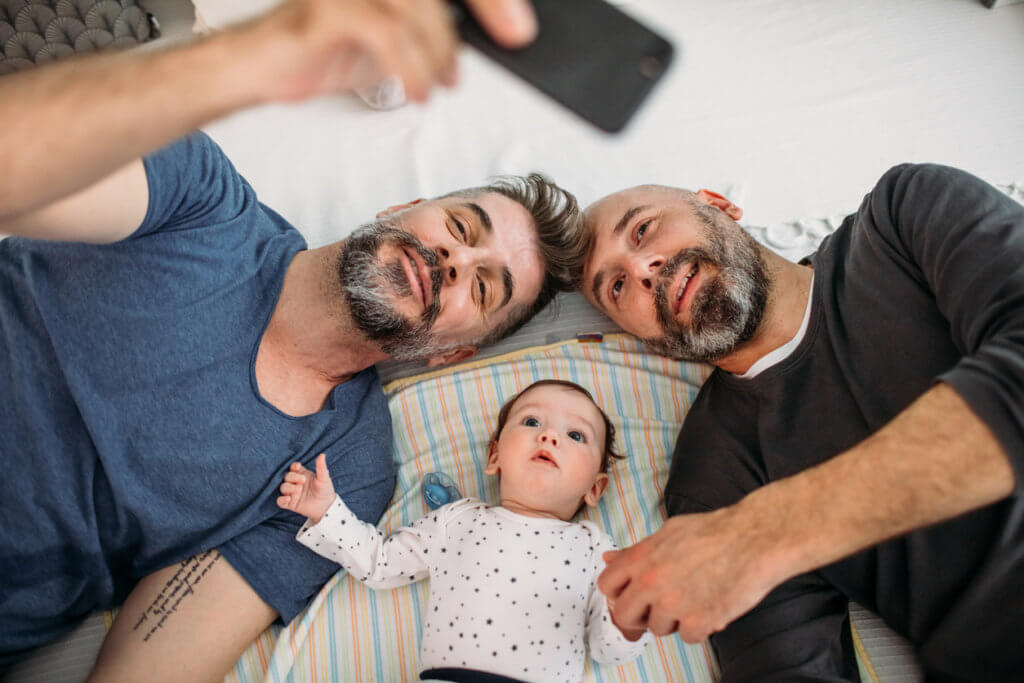One of the first questions that prospective patients ask when starting to learn about LGBTQ+ family-building is, “how much is this going to cost?” When it comes to LGBTQ+ fertility, there are so many amazing pathways to biological parenthood – between IUI, IVF, and surrogacy, as well as egg or sperm donation, the considerations are plenty.
The numerous possible paths to parenthood can also make it difficult to comprehend the true cost of becoming an LGBTQ+ parent. In addition, these treatments are not always covered by insurance, making out-of-pocket cost estimates a difficult pill to swallow.
How do you know what’s covered, and how much will this journey actually cost? How can you optimize your coverage and advocate for yourself?
Despite the fact that 63% of LGBTQ millennials plan to use assisted reproductive technology to build their families, many insurance companies still only award fertility coverage based on an outdated diagnosis of “infertility.”
For years, infertility was defined as the inability to conceive after a year or more of egg and sperm exposure, which excludes many single people and members of the LGBTQ+ community from the necessary coverage needed to build their family. In fact, most members of the LGBTQ+ community aren’t “infertile” at all – we just need a little bit of extra help and/or gametes to build families.
How can you find out if family-building is covered for you and your partner? The best way to figure out your own insurance coverage is actually to call the number on the back of your card.
The list of questions below is a great guide for that conversation.
- Do I have coverage for diagnostic testing for infertility treatment?
- Do I have coverage for fertility treatments? Intrauterine insemination (IUI) coverage? In vitro fertilization (IVF) coverage? If so, how many cycles are covered for each?
- Do I have IUI/IVF coverage? If so, how many cycles are covered for each?
- Is cycle monitoring or medication covered under this plan?
- Do I have a co-pay for office visits?
- What is my deductible?
- Will my blood work and ultrasounds have a copay or be applied to my deductible and co-insurance?
- Is there coverage or reimbursement for surrogacy with my plan? [for dads-to-be]
- Are there any exclusions to my plan?
Once you know your coverage, the next step is to meet with your fertility specialist and determine the path to parenthood that will be best for you.
For moms-to-be and anyone born with ovaries, there are a few pathways to parenthood including IUI, IVF, or reciprocal IVF. Based on your personal health history, fertility workup, and perhaps that of your partner, your doctor will work with you to personalize your family-building journey.
For dads-to-be and anyone born with testes, your pathway to biological parenthood will require the help of both an egg donor and a surrogate. Your egg donor will contribute their genetics to your future child, and your surrogate (or gestational carrier) will carry and deliver the baby.
No matter what, LGBTQ+ family-building takes time and financial resources — so how can you best optimize your coverage for your future family? Some tips include:
Advocate for yourself with your human resources department.
If you work for a company where straight couples have IVF coverage or a surrogacy reimbursement benefit, you might have the leverage to ask for an equitable LGBTQ+ benefit.
Buy into a third party program.
Many larger companies are now offering same-sex couples family-building benefits through an additional third party policy. I love that companies like Progyny and WINFertility have made this possible.
Make the most of the end of the year.
Use the time after you’ve met your deductible to make the most of your coverage and get baseline fertility testing done so you can build your plan with your fertility specialist. Tests like semen analyses, hormone level checks, and even recessive carrier genetic screening may be covered by insurance, even if the rest of your treatment is not.
Investigate your options before open enrollment.
Open enrollment is the time each year when you can switch or upgrade your healthcare insurance plan for the next year. The window is different for each employer and insurance provider, so be sure to reach out to your human resources department for those deadlines.
Switch jobs.
While this may seem like an overwhelming option, according to a recent webinar that I conducted with NASDAQ & Progyny, over 80% of millennials now report that they would switch jobs for better benefits – so you’re not alone.
If you don’t have insurance coverage, all is not lost. There are many family-building grants available for members of the LGBTQ+ community, as well as organizations like Men Having Babies or Fertility Within Reach, dedicated to providing the advice and support you need.
With increased coverage and continued advocacy, financial support for our families will grow, and LGBTQ+ family-building will no longer have to be a dream realized “at all costs”.
At EDI our clients come from over 35 countries and span all ages and stages. Keeping up with our clients takes a lot of innovation and forward-thinking; especially in the ever-changing world of insurance. Part of being in step with the latest healthcare plans and the preservation of your fertility is working one-on-one with you so that your dreams can come true!
Story Source: LGBTQ Nation | Written by Dr. Mark Leondires | Sept. 19, 2020 | Dr. Mark Leondires is the founder and Medical Director of RMA of Connecticut and Gay Parents to Be


